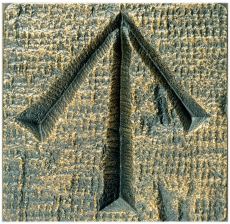Convict Life in New South Wales
In less than a hundred years of operation of the transportation system, from 1787 to 1868, 825 shiploads of convicts were sent to Australia bring a total of about 165,000 people. Transportation was seen as a way of dealing with overcrowding in British prisons while at the same time providing a source of labour in a new colony which could have economic or even strategic importance to Britain.
Convicts were the heart of the labour system in New South Wales from 1788. They could be assigned to settlers and officers of the government of NSW, they could be assigned to government farms or to other public works considered essential to the growth of the new colony. In our study of the building of the Great North Road, convicts were the labour force which made the construction of this road possible and that of many other roads in the colony. Most would have had no previous experience of this type of work and, of course, they came from places in Britain where the countryside and the climate were very different to those in New South Wales.
Convicts were the heart of the labour system in New South Wales from 1788. They could be assigned to settlers and officers of the government of NSW, they could be assigned to government farms or to other public works considered essential to the growth of the new colony. In our study of the building of the Great North Road, convicts were the labour force which made the construction of this road possible and that of many other roads in the colony. Most would have had no previous experience of this type of work and, of course, they came from places in Britain where the countryside and the climate were very different to those in New South Wales.
Arrival of Convicts in Sydney. NSW
When the convict ships arrived in Sydney, the convicts were mustered on shore. Any who were too sick to work were taken to hospital. The process of selection was made by landowners who took convicts as assigned servants and by government officers who require them for work on government farms or to labour on public works. These convicts were housed in barracks until they could be sent to work.
There were many public works, where the government employed convicts to do jobs involving the building of public facilities in the colony. They were employed in constructing roads, bridges, churches and public buildings, farming, milling timber and manufacturing tools, nails and bricks among other things. As a rule, the most skilled were picked for necessary jobs as soon as they came off the ships, leaving the remainder to be assigned.
Convicts with valuable skills were known as “mechanics” and were in great demand. They soon began to realise that they could do well for themselves here. Most convicts were allowed to use any spare time they had to earn money doing odd jobs and those with useful skills were sought after.
There were many public works, where the government employed convicts to do jobs involving the building of public facilities in the colony. They were employed in constructing roads, bridges, churches and public buildings, farming, milling timber and manufacturing tools, nails and bricks among other things. As a rule, the most skilled were picked for necessary jobs as soon as they came off the ships, leaving the remainder to be assigned.
Convicts with valuable skills were known as “mechanics” and were in great demand. They soon began to realise that they could do well for themselves here. Most convicts were allowed to use any spare time they had to earn money doing odd jobs and those with useful skills were sought after.

